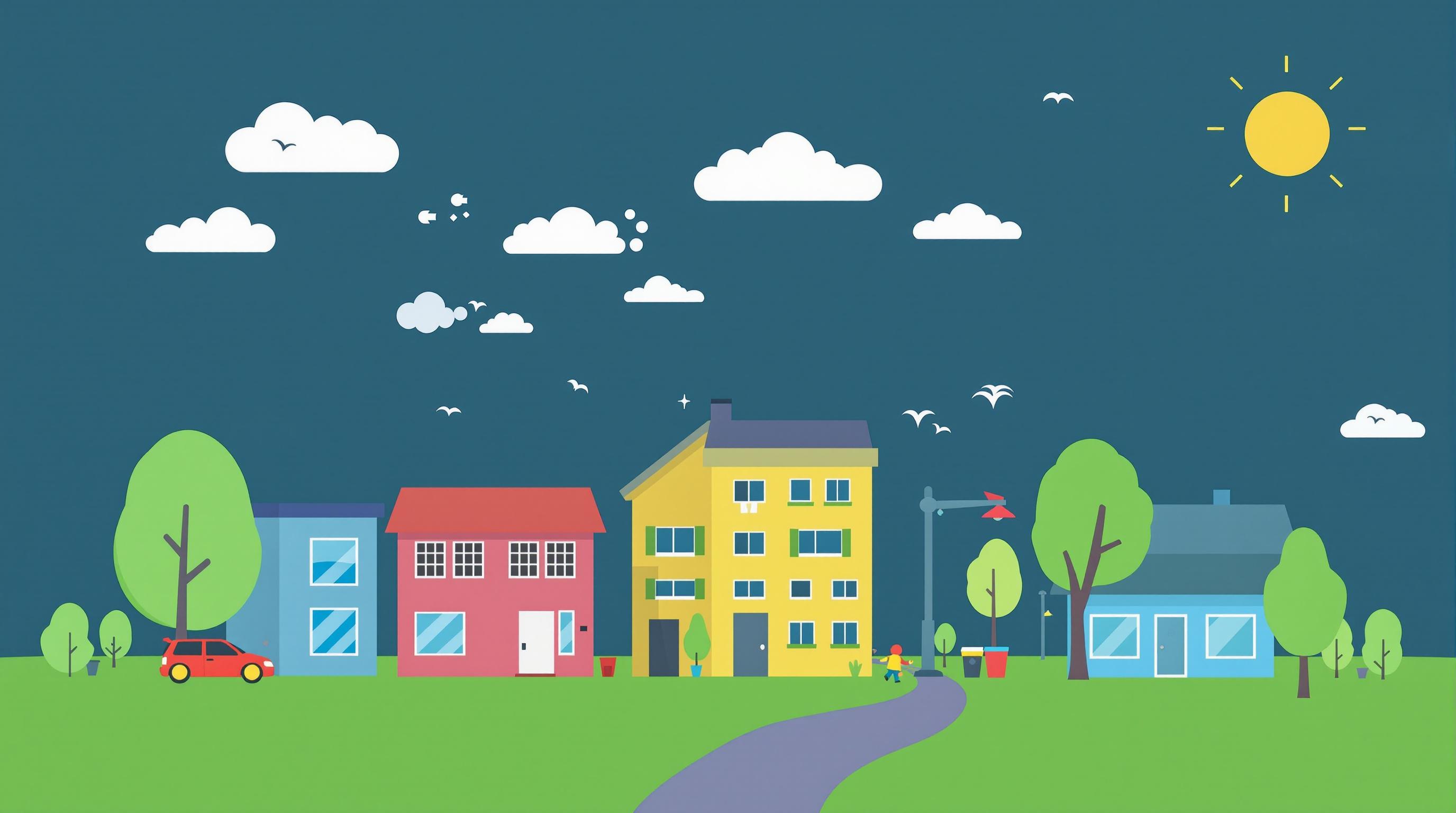Related Articles
- Top 5 Game-Changing Copyright Management Apps from 2019 to 2024 for Modern Creators
- Top 5 Game-Changing Copyright Management Apps Released Since 2019 for Fast, Foolproof Filings
- How Traditional Storytelling Shapes Community Healing in Conflict Settlement Practices Worldwide
- The Role of Ancient Storytelling Traditions in Shaping Modern Conflict Settlement Practices
- The Quiet Shift: How Climate Change Is Secretly Reshaping Liability Standards in Insurance Policies
- The Unseen Impact of Climate Change on Rural Insurance Mandates and Local Risk Assessments
How Microclimates Influence Tenant Rights and Lease Terms in Unexpected Ways
How Microclimates Influence Tenant Rights and Lease Terms in Unexpected Ways
Microclimates can subtly redefine the boundaries of tenant rights and lease agreements, revealing intricacies that often go unnoticed by both landlords and tenants. Understanding these localized environmental nuances is crucial for navigating unexpected legal and practical considerations in housing.
At 42 years old and having navigated both the bustling energy of city living and peaceful rural retreats, I've observed firsthand how the immediate environment around a rental property can radically influence tenant experiences and lease stipulations.
A Tale of Two Apartments: How Shade Changes Everything
Consider two apartments in the same city, just blocks apart. Apartment A is nestled beneath a sprawling canopy of ancient oaks, creating a cool, shaded microclimate. Apartment B lies on the sun-drenched side of a concrete block. This shade reduces temperatures by up to 7°F, impacting everything from energy usage to mold growth. Tenants in Apartment A may negotiate leases with different clauses relating to HVAC usage or moisture control, giving rise to specific landlord obligations under local housing laws.
Microclimates are essentially localized atmospheric zones where the climate differs from the surrounding area. This can mean temperature variation, differing humidity levels, and even micro-rainfall patterns that standard lease agreements rarely consider.
Legal Frameworks and Environmental Realities
The challenge is that most landlord-tenant laws operate on generalized assumptions about property conditions and maintenance. Yet, in reality, a shaded, damp microclimate might increase mold risks, giving tenants legal grounds to request remediation or rent adjustments. Conversely, a sunny but overheated locale might shift responsibility for cooling costs, especially when old buildings are susceptible to heat entrapment—something that won’t emerge unless the microclimate is understood.
For example, a 2017 study by the Environmental Protection Agency noted that buildings in urban heat islands saw their cooling needs rise by as much as 30%. In cities like Phoenix, this has compounded rent disputes, as tenants seek fair terms accounting for soaring energy expenses.
Breaking Down Lease Clauses: The Fine Print Matters More Than Ever
Lease agreements often contain boilerplate clauses that don’t explicitly mention environmental specifics. Yet, tenants in microclimates with unique moisture or temperature patterns can argue for amendments or addendums. One tenant in Seattle famously won a case arguing that constant shade contributed to persistent dampness, resulting in a landlord-mandated upgrade to moisture barriers—an unexpected outcome that shifted traditional interpretations of habitability clauses.
A Conversational Perspective: “Did You Check Your Microclimate?”
“Hey, have you ever thought about how the tiny climate where you live affects your lease?” asked my friend Julia, a 28-year-old tenant advocate. It might sound odd, but yes! The microclimate around your home can influence how comfortable you feel, your utility bills, and even whether you have to fret over mold patches. She reminded me about a tenant in San Francisco who got a rent reduction after proving that the foggy bay area's moisture caused repeated heating system failures, directly affecting their living conditions.
Persuasion: Why Landlords and Tenants Should Embrace Microclimate Awareness
It's high time that both landlords and tenants embrace the reality of microclimates to foster smoother, more equitable rental relationships. When landlords preemptively assess microclimatic details—like sun exposure, wind patterns, or local humidity—they can tailor maintenance and lease terms to prevent disputes. Tenants, in turn, gain leverage to negotiate better terms based on real, lived environmental factors.
The U.S. Department of Housing and Urban Development (HUD) estimates that nearly 20% of housing complaints relate to environmental quality inside homes. Addressing microclimate-related issues may significantly reduce these complaints.
Humorous Insight: When Your Apartment Is Basically a Jungle
Imagine renting a unit that's officially in a city, but thanks to some geological quirks, it might as well be a rainforest. High humidity, unexpected mold colonies, and the light-loving plants taking over your windowsill might prompt you to wonder if your landlord moonlights as a botanist. While it sounds funny, tenants in such "jungles" face genuine struggles—and lease negotiations tend to get wild too.
There’s even an anecdote about a Brooklyn tenant who jokingly called their basement "the swamp" but had to seriously push the landlord to install a dehumidifier to preserve habitability. Microclimate issues might inspire humor, but the consequences are very real.
Statistics Shed More Light
A 2021 Journal of Environmental Psychology article reported that 35% of tenants in areas with distinct microclimates had experienced lease disputes directly linked to environmental challenges in their buildings.
That’s no small figure! It underscores how often these subtle environmental differences influence lease negotiations, tenant satisfaction, and even eviction rates.
Case Study: The Coastal Condo and the "Salt Air" Clause
In a coastal town in Maine, a unique addition appeared in lease contracts after years of tenant complaints: a "salt air" maintenance clause. The increased corrosion from salty winds demanded more frequent repairs and maintenance, and tenants wisely requested this be acknowledged formally.
The case highlights how microclimates can lead to customized lease terms. Landlords who ignore such factors risk legal action or tenant dissatisfaction, while those who adjust can create win-win situations.
Storytelling: Lessons From My Childhood Home
Growing up on a hillside shaded by towering pine trees, my childhood home served as my first real lesson in microclimates and habitation. The shade kept summers cooler, but damp patches and frequent mildew meant my parents often negotiated with the landlord to fix persistent moisture problems. I later realized how such experiences shape expectations about what’s "normal" in housing conditions and related lease terms.
When tenants understand their microclimate, they’re better equipped to advocate for appropriate protections and adjustments.
Going Beyond Comfort: Health and Safety Considerations
The ramifications of microclimates extend well beyond mere comfort. According to the World Health Organization, inadequate housing linked to environmental factors can exacerbate respiratory conditions like asthma and increase allergy risks. Mold-affected homes are a prime example.
Recognizing microclimates means recognizing potential health hazards that must be factored into lease agreements and maintenance responsibilities.
Conclusion: Viewing Lease Terms Through the Lens of Nature’s Nuances
Microclimates reveal hidden facets behind tenant rights and lease terms, forcing us to reconsider traditional assumptions. Whether it’s shade, humidity, or salt air, these environmental subtleties create living conditions that require thoughtful lease language, legal awareness, and empathetic landlord-tenant relationships.
Built environment and natural environment intersect in surprising ways—acknowledging this nexus equips all parties to better navigate the complexities of rental life. As our climate continues to evolve, awareness of these microclimate influences will become ever more vital.




